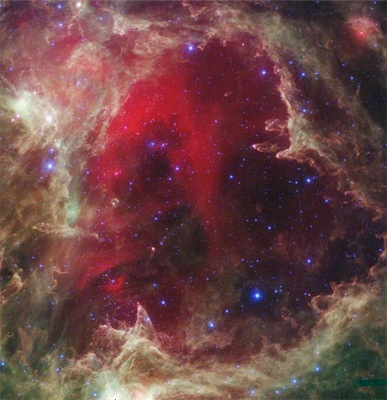The beating heart of W5 Nebula in Cassiopeia captured by the Spritzer Space Telescope in Infrared.
"W5 is a nebula, a giant cloud of gas roughly 6000 light years away in the constellation of Cassiopeia. It’s enormous, spanning about 2 x 1.5 degrees of the sky (15 times the size of the full Moon on the sky), and is actively cranking out stars. The valentine-shape is actually an enormous cavern, a hollow carved out of the gas by the winds and fierce ultraviolet light flooding out from massive young stars in its… well, its heart. It’s like these stars are blowing a vast bubble in the middle of the cloud. The stars doing the work can be seen in the image; the bright blue ones are the culprits."
"There’s another way to find those stars: look at the edges of the bubble. See the triangular or finger-like extensions of material pointing into the bubble? Those are light years-long towers of gas being eaten away by the winds and UV light from the hot massive stars, so the fingers point right to those stars."
The article has several more, fascinating and accessible paragraphs.

1 comment:
Post a Comment